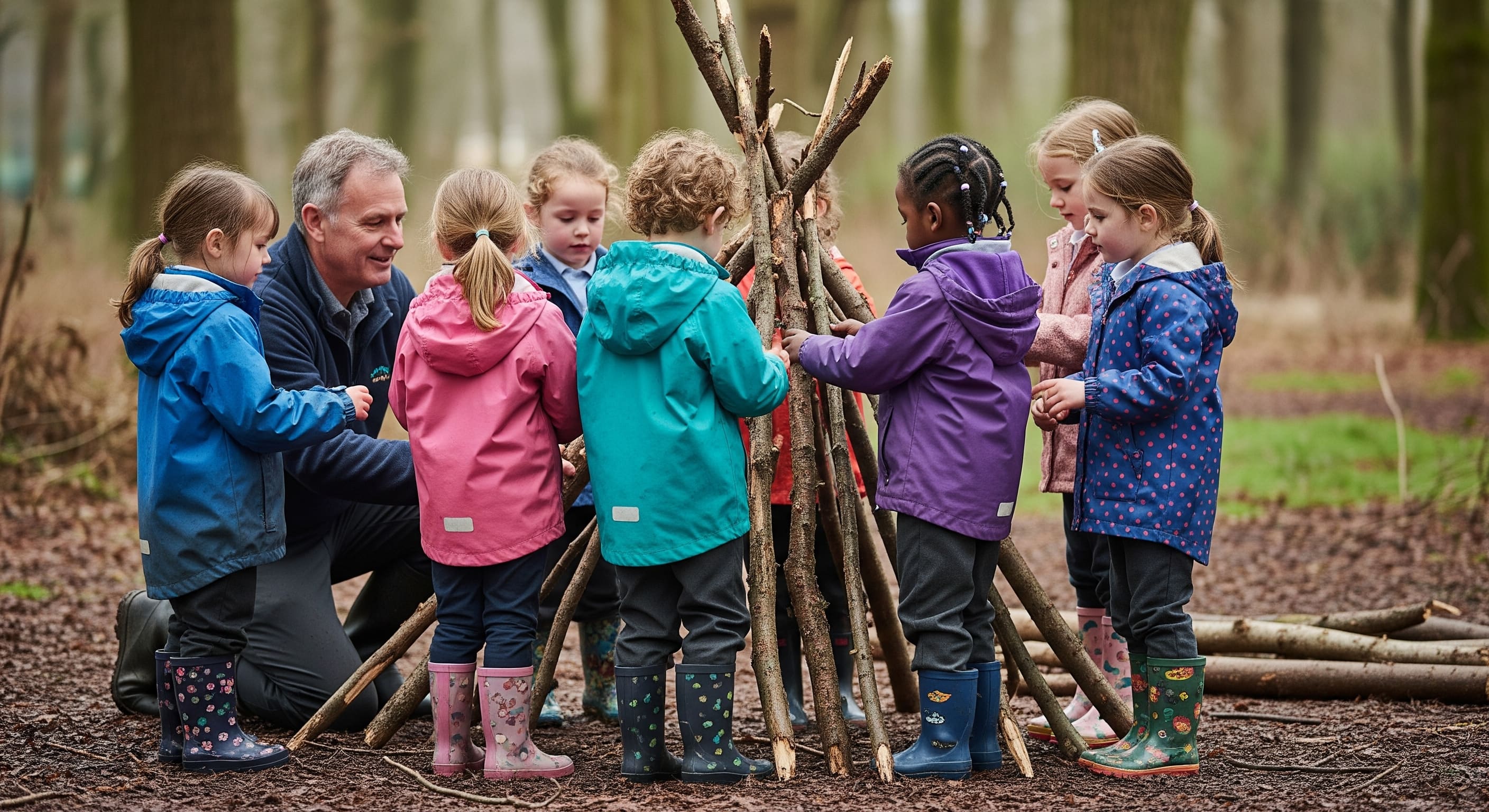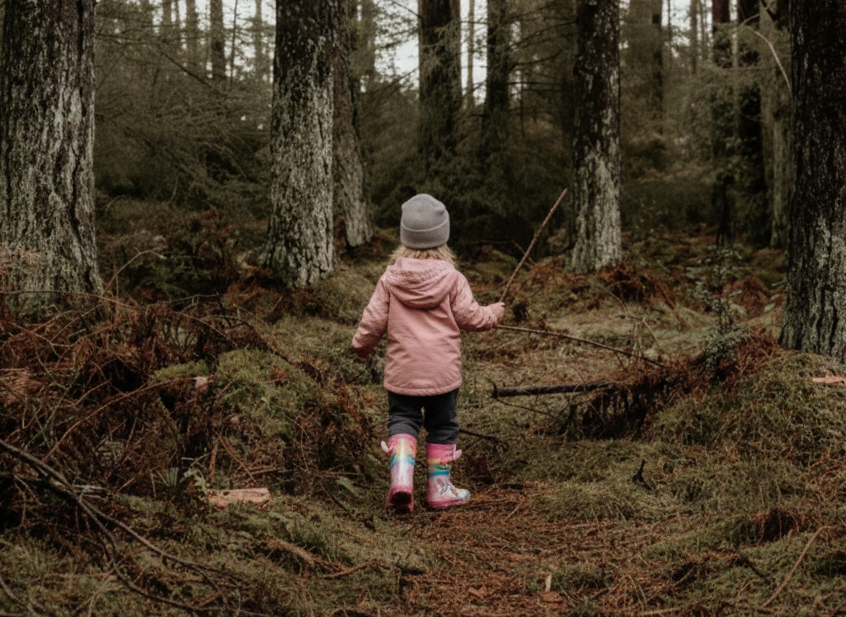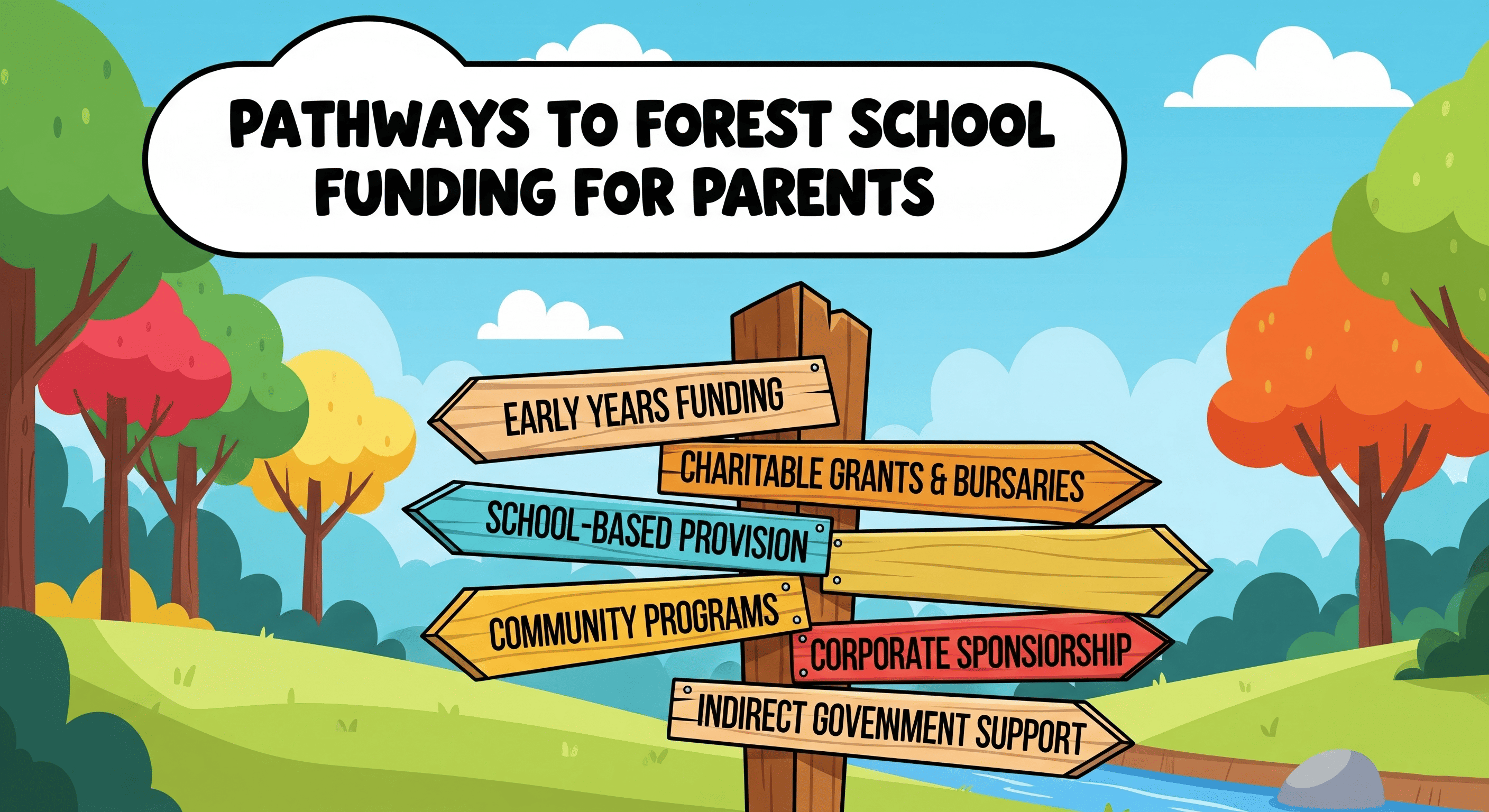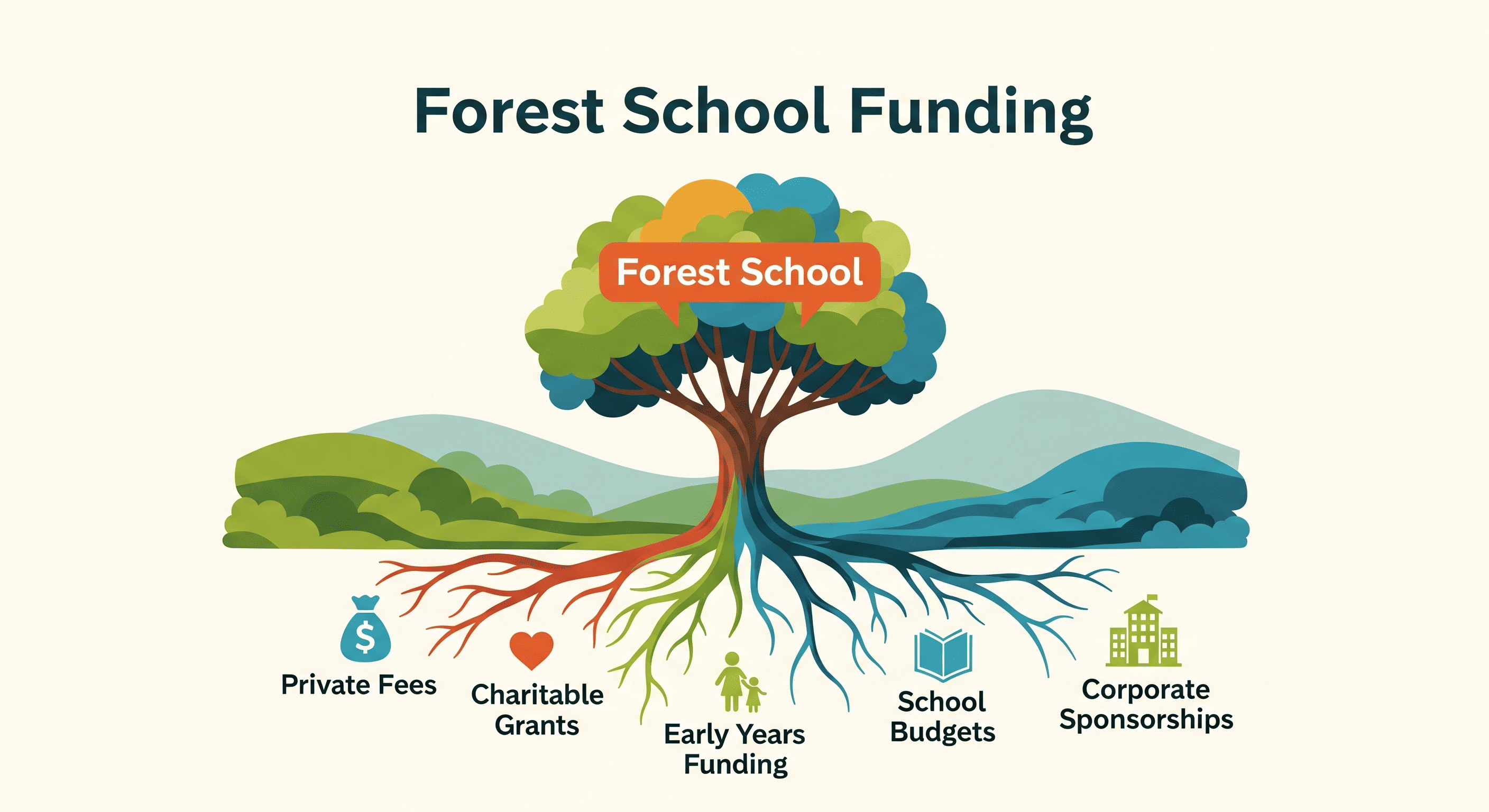· Early Years Education · 9 min read
What is Outdoor Learning and Why is it Important in Early Years?
This article explores how leaving the classroom for the outdoors boosts development, from physical health to problem-solving skills. Learn why it matters and how you can find the best nature-based education for your family.

Beyond the Classroom Walls: What is Outdoor Learning and Why Does it Matter for Your Child?
As a parent, you’re constantly seeking the best environments for your child to grow, learn, and thrive. You choose their books, plan their meals, and research their schools. But what if one of the most powerful and enriching classrooms isn’t a room at all? What if it’s right outside the door?
This is the heart of outdoor learning.
In its simplest form, outdoor learning is exactly what it sounds like: taking the learning experience outside. It’s a broad term for planned and spontaneous activities that happen in natural spaces. It’s about swapping desks and whiteboards for logs and leaves, and embracing the world as a living, breathing textbook.
But in the crucial early years of a child’s life, it’s so much more than just a bit of fresh air. It’s a fundamental approach to education that nurtures curious minds, strong bodies, and resilient spirits. And while many settings embrace outdoor play, some programmes, like Forest Schools, have elevated this practice into a profound educational ethos.
This article will explore what outdoor learning truly means for your child and why it’s a cornerstone of modern early years development. You’ll also see how Forest School embodies its principles, and how you can find a setting that offers this incredible experience for your family.
The Core Importance of Outdoor Learning
The Early Years Foundation Stage (EYFS), the statutory framework for early education in the UK, places significant emphasis on outdoor experiences. This isn’t just a recommendation; it’s a reflection of overwhelming evidence. Research from educators and child development experts shows that learning outdoors has a deep and lasting impact.
The Council for Learning Outside the Classroom (CLOtC) champions this, stating that outdoor learning “brings learning to life and builds connections between textbooks and the real world.” For a young child, this is paramount. Abstract concepts become tangible and memorable when they can be seen, touched, and experienced directly.
The Key Benefits for a Developing Child
Let’s break down why swapping the classroom for the great outdoors, even for a portion of the day, can be a game-changer for your little one.
| Benefit Category | How Outdoor Learning Nurtures a Child |
|---|---|
| Physical Health & Development | The outdoors provides limitless space to run, jump, climb, and balance. This develops gross motor skills, coordination, and spatial awareness far more effectively than a confined indoor area. It helps build a strong foundation for a healthy, active life. |
| Mental & Emotional Wellbeing | Studies consistently show that spending time in nature reduces stress and anxiety. The freedom of the outdoors allows children to express themselves, burn off energy, and develop a sense of calm and well-being. It’s a natural mood booster! |
| Social Skills & Confidence | Outdoor spaces encourage collaborative play. Children learn to work together to build a den, negotiate rules for a game, or help a friend over a tricky log. These shared experiences build communication skills, empathy, and rock-solid self-esteem. |
| Problem-Solving & Creativity | How can we stop the water from running downhill? How can we make a shelter that stays up? The natural world is full of real-time challenges that spark curiosity and critical thinking. It’s the ultimate open-ended resource, fostering imagination and resourcefulness. |
| Connection to Nature | In an increasingly digital world, fostering a love and respect for the natural environment is crucial. Direct, regular contact with the seasons, the weather, and local wildlife builds a deep, intuitive understanding of the world that will last a lifetime. |
| Risk Assessment | A supportive outdoor environment is the perfect place for children to learn to take appropriate risks. Deciding how high to climb or how to use a stick as a tool teaches them to assess situations and trust their own capabilities. Ensuring children have the right clothes is key to keeping them safe and comfortable as they explore. |

Image: Collaborative play in an outdoor setting builds social skills and confidence.
Outdoor Learning vs. Forest School: What’s the Difference?
This is a common and important question for parents. Think of it this way: Outdoor Learning is the broad category, while Forest School is a specific, high-quality philosophy within it.
While any good nursery might take children to a park to learn about seasons, a genuine Forest School is defined by a more structured and profound approach. Parents looking for the deepest level of nature-based education should understand these distinctions.
Key features that define a Forest School programme include:
- Regular and Long-Term Sessions: It’s not a one-off trip. Children attend regular sessions over a long period, allowing for deep connections with the environment, their peers, and their own development.
- A Specific Natural Setting: It typically takes place in a woodland or natural environment with trees, which provides a rich, dynamic setting for learning.
- Qualified Practitioners: Sessions are led by trained Forest School Leaders (parents should look for a Level 3 qualification). These leaders are skilled in facilitating child-led learning, managing risks, and understanding the natural world.
- Child-Led Ethos: The children’s interests act as the compass that guides the sessions. If a child is fascinated by a particular bug, that becomes the learning opportunity.
- Holistic Development Focus: The aim is to develop the whole child – their confidence, independence, emotional intelligence, and physical skills are just as important as academic learning.
- Community and Belonging: Through shared experiences, songs, and reflection around a base camp, children develop a powerful sense of belonging to their group and the woods.
So, while all outdoor learning is beneficial, Forest School takes it a step further, offering a truly transformative experience. If you feel this approach is right for your child, it’s vital to know what to look for. A helpful resource is this guide on choosing a Forest School, which outlines key questions every parent should ask.
The Forest School Link: Where Outdoor Learning Flourishes
Forest School is, in essence, the gold standard of outdoor learning in the early years. It harnesses all the benefits discussed above and amplifies them through its unique, child-centred approach.
Activities often seen in a Forest School session that exemplify high-quality outdoor learning include:
- Using Real Tools: Under expert supervision, children learn to use tools like peelers for whittling or saws for cutting wood. This builds immense confidence and teaches respect and responsibility. You can learn more about the types of tools used in Forest School and how they support development.
- Campfire Cooking: A powerful lesson in cause, effect, and safety. Learning to build and respect a fire, and then cooking a simple snack over it, is a memorable and community-building experience.
- Den Building: This classic activity is a masterclass in teamwork, physics, engineering, and creative problem-solving.
As organisations like the National Literacy Trust have noted, outdoor experiences boost everything from communication to motivation and physical skills. This is the Forest School model in action. It’s an approach that doesn’t just teach children about the world; it places them right in the heart of it, empowering them to become capable, confident, and conscientious individuals.
Getting Started: Practical Next Steps
For Parents
If you’re considering outdoor learning for your child, start by exploring local opportunities and gradually increasing outdoor experiences at home.
Immediate Actions:
- Research local Forest School programmes and outdoor nurseries
- Increase family outdoor time and nature exploration
- Invest in appropriate outdoor clothing and equipment
- Connect with other families interested in outdoor learning
Explore our comprehensive tools and resources to support your outdoor learning journey.
For Educators
Early years practitioners can begin incorporating outdoor learning principles immediately, regardless of their current setting or resources.
Starting Points:
- Increase daily outdoor time and observation
- Introduce natural materials into learning activities
- Plan regular nature walks and explorations
- Develop risk-benefit assessment skills
- Consider professional development in outdoor education
Conclusion: Investing in Natural Development
Outdoor learning represents far more than an educational trend; it addresses fundamental human needs for connection with nature, physical challenge, and authentic learning experiences. In our increasingly digital world, outdoor learning provides essential balance, fostering the holistic development that children need to thrive.
The evidence is clear: children who experience regular, quality outdoor learning show improved physical health, enhanced cognitive development, stronger social skills, and greater emotional resilience. These benefits extend far beyond early years, creating foundations for lifelong wellbeing and environmental stewardship.
As we recognise the importance of outdoor learning, we invest not just in individual children’s development, but in creating a generation better equipped to face future challenges with confidence, creativity, and care for the natural world that sustains us all.
The journey into outdoor learning begins with a single step outside. Whether through formal Forest School programmes, nature-based nurseries, or increased family outdoor adventures, every child deserves the transformative benefits that come from learning in and with the natural world.
Frequently Asked Questions
Q: At what age can children begin outdoor learning? A: Children can benefit from outdoor learning from infancy. Many outdoor nurseries accept children from 6 months, whilst Forest School programmes typically begin around 18 months to 2 years, adapting activities to developmental stages.
Q: Is outdoor learning safe for young children? A: Well-managed outdoor learning programmes maintain excellent safety records. Qualified practitioners use risk-benefit assessments to ensure appropriate challenges whilst maintaining safety. Children often develop better risk assessment skills through outdoor experiences.
Q: How do children learn academic skills through outdoor education? A: Outdoor learning supports academic development through hands-on experiences. Mathematics emerges through measuring, counting, and pattern recognition. Science develops through observation and experimentation. Literacy grows through storytelling and communication about discoveries.
Q: What about children with special educational needs? A: Outdoor learning often provides exceptional benefits for children with additional needs. The multi-sensory environment, reduced overstimulation, and opportunities for different types of success can be particularly beneficial for children with autism, ADHD, or sensory processing difficulties.
Q: How can families support outdoor learning at home? A: Families can extend outdoor learning through regular nature walks, garden exploration, collecting natural materials, outdoor art and building projects, and simply increasing unstructured outdoor play time in varied natural environments.



